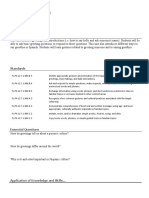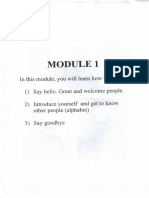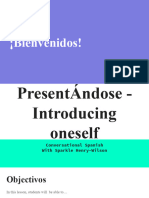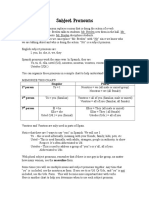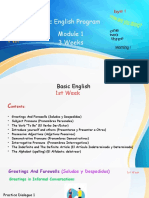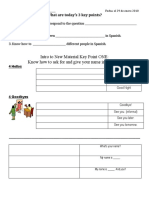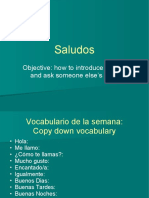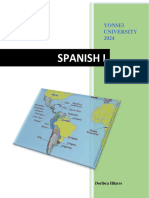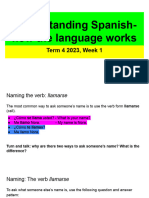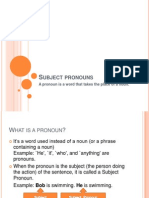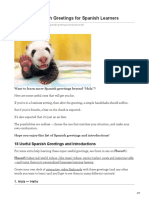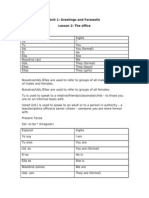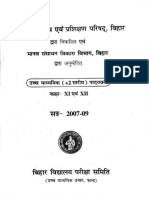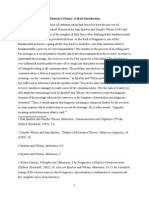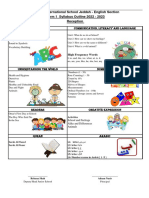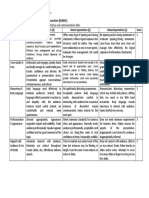0% found this document useful (0 votes)
31 views3 pagesSpanish Module 2
This module teaches basic Spanish conversation skills focused on meeting people and discussing personal information. It includes essential vocabulary, conversation protocols, and objectives for learners to memorize questions and construct meaningful dialogues. The document also emphasizes the difference between formal and informal greetings in Spanish.
Uploaded by
Yvette LogmaoCopyright
© © All Rights Reserved
We take content rights seriously. If you suspect this is your content, claim it here.
Available Formats
Download as PDF, TXT or read online on Scribd
0% found this document useful (0 votes)
31 views3 pagesSpanish Module 2
This module teaches basic Spanish conversation skills focused on meeting people and discussing personal information. It includes essential vocabulary, conversation protocols, and objectives for learners to memorize questions and construct meaningful dialogues. The document also emphasizes the difference between formal and informal greetings in Spanish.
Uploaded by
Yvette LogmaoCopyright
© © All Rights Reserved
We take content rights seriously. If you suspect this is your content, claim it here.
Available Formats
Download as PDF, TXT or read online on Scribd
/ 3
